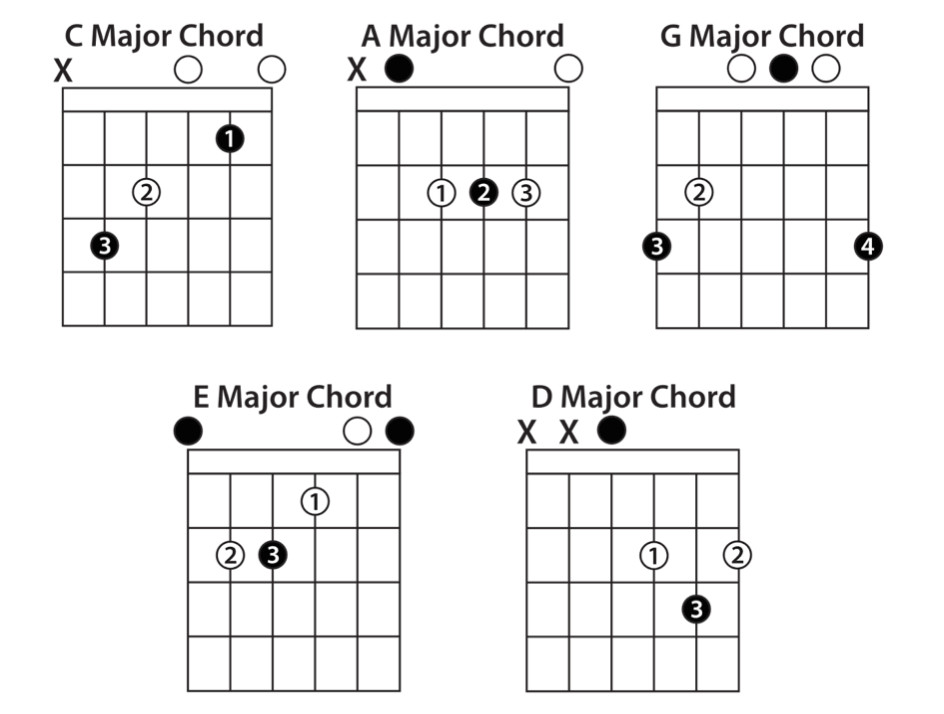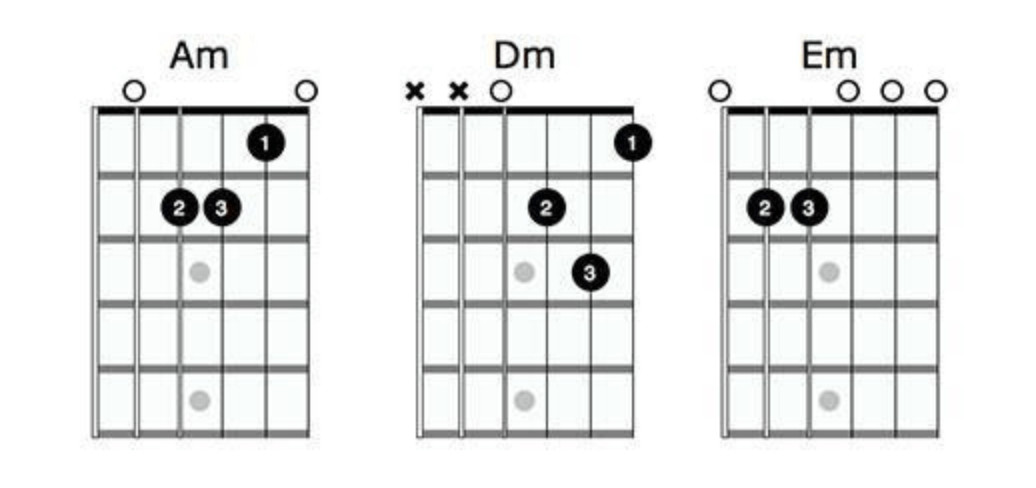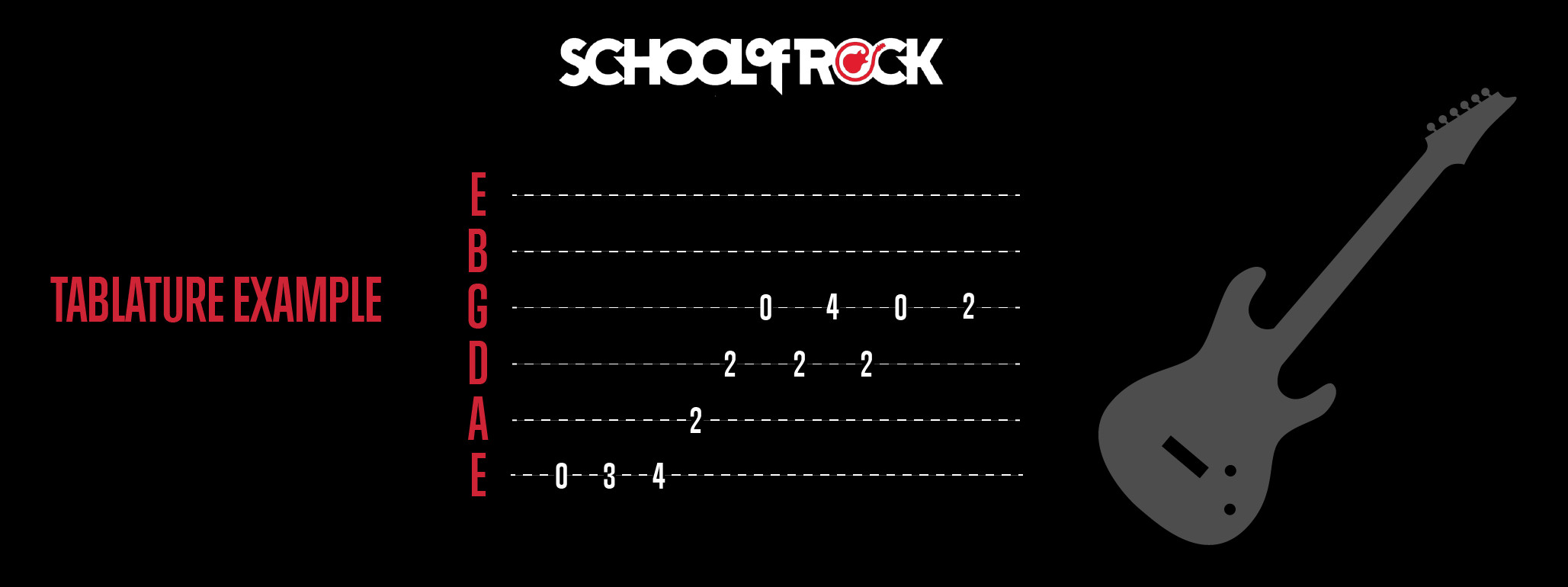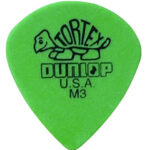Picking up a guitar for the first time is exciting. You grab your pick, get your fingers ready, but then the question hits: “What do I even play?”. For most guitarists, the journey begins with chords. But what exactly are chords? Think of chords as the building blocks of harmony in music. They provide rhythm and depth, making music feel complete and engaging. While instruments like drums and bass focus on rhythm and depth, most instruments rely on chords to create musical harmony. Let’s dive into the world of basic guitar chords for beginners, explore tips and tricks to master them, and discover songs you can start playing right away.
At institutions like School of Rock, the emphasis is on practical learning. Students quickly apply what they learn in lessons to live performances. Whether you aspire to be a lead guitarist, focusing on melodies and solos, or a rhythm guitarist, laying down chords and rhythms, understanding chords is fundamental. If you’re in the market for your first guitar or considering an upgrade, check out this helpful guitar-buying guide for valuable advice.
Understanding Guitar Chords
Guitar chords might seem daunting at first, especially because there are so many types and ways to play them. However, for beginners, it’s best to start with the foundational types. Generally, we can categorize beginner-friendly guitar chords into three main groups:
Power Chords
Power chords are often among the first chords taught at places like School of Rock, and for good reason. They are incredibly versatile, appearing across genres from rock to classical and contemporary music. Their appeal for beginners lies in their simplicity. Power chords typically involve only two or three strings and frets, making them physically easier to play. While suitable for any guitar, they are particularly impactful on electric guitars, where distortion can be added to enhance their depth and intensity, setting the mood of a song.
Open Chords
Open chords are another excellent starting point for beginners. What makes them ‘open’ is that they incorporate open strings—strings that are plucked without being fretted. Like power chords, they generally utilize fewer frets and fingers, simplifying the playing process. However, unlike power chords which may use fewer strings, open chords typically involve all six strings of the guitar. The common open chords are often referred to as the CAGED system, which we’ll explore shortly.
Barre Chords
Barre chords represent a step up in complexity from power and open chords. They are incredibly valuable as they allow you to move a single chord shape up and down the guitar neck to create a variety of chords. This mobility can make chord transitions smoother once mastered. However, they are often challenging for beginners because they require one or sometimes two fingers to press down multiple strings at the same fret simultaneously. While essential for expanding your guitar vocabulary, we’ll focus on open and power chords for now and tackle barre chords at a later stage.
Open Guitar Chords
Before we delve into specific open chords, it’s crucial to ensure your guitar is properly tuned. Playing in tune is fundamental for learning chords correctly and for your music to sound right. If you’re struggling with tuning, this guide to tuning a guitar offers practical tips to get your guitar sounding its best.
 Open Guitar Chords for Beginners
Open Guitar Chords for Beginners
Now, let’s explore open chords, especially the CAGED system. CAGED is a mnemonic used in performance-based music education like School of Rock because these chords are foundational in many popular songs students learn and perform. Each letter in CAGED represents a major open chord – C, A, G, E, and D. These chords are visualized in chord diagrams, which are essential tools for learning finger placements.
Understanding Chord Diagrams
A chord diagram is a visual representation of a guitar fretboard, showing you exactly where to place your fingers to play a chord. It displays the strings, frets, and which fingers to use. Diagrams are read horizontally, with the top line representing the thickest string (low E) and the bottom line the thinnest string (high E)—imagine holding your guitar upright in front of you.
Symbols in chord diagrams:
- X: Indicates a string that should not be played (muted).
- O (circle): Represents an open string, played without fretting.
- Numbers (1, 2, 3, 4): Show which finger to use: 1= index finger, 2= middle finger, 3= ring finger, and 4= pinky finger.
- Fret Boxes: The area below the top line of the diagram indicates the fret numbers. The first row of boxes is typically the first fret, and so on.
For example, in the A Major chord diagram, you’ll see finger placements on the second fret. Your index finger goes on the second fret of the D string, the middle finger on the G string at the second fret, and the ring finger on the B string at the second fret.
 Diagram of A Major Chord
Diagram of A Major Chord
Beyond CAGED, several other open chords are frequently used and are relatively easy for beginners to learn. These expand your chord vocabulary and allow you to play a wider range of songs.
 Diagram of common beginner guitar chords
Diagram of common beginner guitar chords
It’s important not to confuse chord diagrams with tablature (TAB). While both are visual aids for guitarists, they function differently. Tablature is designed to show you which frets and strings to play to reproduce a melody or riff. In tablature, lines are read vertically, with the bottom line as the low E string and the top line as the high E string. Numbers on the lines indicate the fret to be played, and ‘0’ represents an open string. Reading tablature is like looking down at your guitar from playing position.
 Example of guitar tablature
Example of guitar tablature
Chord diagrams are invaluable because they not only show you the finger placement for chords but also suggest which fingers to use, facilitating smoother transitions between chords. With consistent practice, these diagrams become less necessary as muscle memory takes over, and you’ll be able to form chords automatically. As you learn new chords, keep these tips in mind:
- Position Fingers Close to the Fret: On the guitar neck, frets are separated by thin metal bars. Place your fingers just behind these bars, closer to the bridge of the guitar. This requires less pressure to produce a clear sound. Experiment by placing your finger in the middle of the fret or right behind the fret bar to find what works best for you.
- Use Your Fingertips: Press down on the strings with your fingertips, ensuring they are arched. This allows you to apply focused pressure and avoid muting adjacent strings. Imagine your hand forming a ‘C’ shape to maintain this arch.
- Play Each String Individually: After forming a chord, strum each string separately. This helps identify if any string is muted or buzzing. If a note doesn’t ring clearly, adjust your finger position or pressure until it does.
- Practice Fretting and Unfretting: Practice transitioning into and out of chords. Lift your fingers off the fretboard and then quickly reposition them to form the chord again. You can also hover your fingers just above the strings in the chord shape to build muscle memory for the correct finger positions.
Popular Song Chords
Now that you have a grasp of basic guitar chords, how to read chord diagrams, and some practice tips, let’s look at songs you can start playing. Many popular songs are built on simple chord progressions using the CAGED chords and minor chords. Here are a few examples:
- Sweet Home Alabama by Lynyrd Skynyrd: A classic beginner song using just three chords: C, G, and D.
- Bad Moon Rising by Creedence Clearwater Revival: In the key of D, this song uses G, D, and A chords.
- Love Me Do by The Beatles: In the key of G, featuring G, C, and D chords.
- Eleanor Rigby by The Beatles: In Em (E minor) and uses C and variations of Em chords.
- Time Of Your Life by Green Day: In G, using G, C, Cadd9, and D5 power chords. You can simplify the D5 to a regular D major chord for easier play.
- Island in the Sun by Weezer: Uses Em, Am, D, and G throughout the song. The bridge uses power chords, which is a good way to transition into power chord practice.
- Boulevard of Broken Dreams by Green Day: In Fm (F minor), using Em, G, D, and A. Power chords are also used towards the end, providing another opportunity to practice both open and power chords.
More Songs for Beginning Guitarists:
- Hey There Delilah by Plain White T’s
- Hallelujah by Leonard Cohen
- Redemption Song by Bob Marley
- Smoke on the Water by Deep Purple
- Stairway to Heaven by Led Zeppelin
- Hotel California by Eagles
Diving Deeper into Power Chords
Power chords are often considered easier than open chords yet share similarities with barre chords. Compared to open chords, they are simpler as they use fewer notes, typically involving fewer frets and strings. However, the shapes of power chords can resemble parts of barre chords. Let’s clarify with an example.
Consider an A major chord and an A5 power chord. The A major chord contains the notes A, C#, and E. The A5 power chord includes A and E. The A major chord focuses on the root, third, and fifth intervals, while the A5 power chord emphasizes the root, fifth, and octave (which is the same note as the root, just higher). Essentially, they are closely related, with the main difference being that the power chord omits the third. This omission is crucial because the third determines whether a chord is major or minor. Since power chords lack a third, they are neither major nor minor and can be used in place of either, depending on the musical context. Practice alternating between an open chord and a power chord to train your ear to discern the difference.
Power chords also have a connection to barre chords, acting almost as a simplified version. Power chords can be played in various forms, including a three-string version that uses a ‘barre’ technique. The barre technique involves using one finger to press down multiple strings at the same fret. Practicing two-string power chords using a ‘finger barre’ is an excellent stepping stone towards mastering full barre chords, helping you build the necessary finger strength and technique.
What music genres are ideal for practicing power chords? Classic rock and much of today’s pop music heavily feature power chords. In beginner music programs like School of Rock’s Rock 101, power chords are a core component for learning these styles. Here are some songs to practice power chords:
- Wild Thing by The Troggs: Primarily uses A5, D5, and E5 power chords, with occasional G5.
- Let It Be by The Beatles: Can be played with either open chords (C, G, Am, F) or power chords. You can substitute C5, G5, and F5 power chords for their open counterparts, demonstrating the versatility of power chords.
- Rock and Roll by Led Zeppelin: Features A5, D5, and E5 power chords.
- I Love Rock and Roll by Joan Jett: Uses E5, A5, and B5 power chords.
- When I Come Around by Green Day: The entire song is based on power chords: F#5, C#5, D#5, and B5.
- Rockin’ In the Free World by Neil Young: Starts with power chords (E5, D5, C5) and transitions into a mix of open and power chords, including Em, D, and C open chords.
 Diagram of other common beginner guitar chords
Diagram of other common beginner guitar chords
Now that you’ve explored basic guitar chords and songs to play, are you ready to put your knowledge into practice? Whether you need guidance or are eager to start playing, School of Rock is here to help. We offer private music lessons and various music programs tailored to get you started on the right path. Programs like Rock 101 and Performance program are designed for beginners to intermediate players, helping them apply lesson room learning to performing full songs in a band setting. These programs not only teach you open and power chords but also integrate music theory, life skills, teamwork, and real-world experience. Many of the songs mentioned in this article are part of these programs. To learn more, contact your nearest School of Rock location today.
About the Author:
Miranda Morales is a guitar and keyboard instructor at School of Rock Easton in Pennsylvania.

